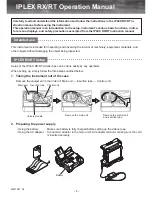
4. MAINTENANCE, ADJUSTMENTS AND CALIBRATION
Page
11
© 2008 DH Instruments, a Fluke Company
4
4
.
.
M
M
A
A
I
I
N
N
T
T
E
E
N
N
A
A
N
N
C
C
E
E
,
,
A
A
D
D
J
J
U
U
S
S
T
T
M
M
E
E
N
N
T
T
S
S
A
A
N
N
D
D
C
C
A
A
L
L
I
I
B
B
R
R
A
A
T
T
I
I
O
O
N
N
4.1
PISTON-CYLINDER ASSEMBLY AND DISASSEMBLY
See the piston-cylinder installation and removal description in Section 2.2.2. The only possible further
disassembly of the piston cylinder is the removal of the cylinder retaining screw and adjustment mass
from the cylinder.
Given the large diameter and small annular gap of the PG7607 piston-cylinders, it is very difficult to
insert the piston into the cylinder without the aid of the alignment mechanism provided by the PG7607
platform mounting post. There is a risk of cocking the piston in the cylinder. It is not recommended that the
piston ever be put into the cylinder when the piston is not installed on the PG7607 mounting post.
Disassembly of the piston-cylinder assembly exposes the piston-cylinder to possible damage. The main
risk is damage to the exposed critical working surfaces. Only qualified personnel should undertake piston-
cylinder disassembly and reassembly and the instructions and recommendations contained in this manual
should be followed carefully throughout the operation.
NEVER touch the lapped surfaces (polished appearance) of the piston or cylinder with your bare hands.
Body oils and acids can permanently etch the surfaces.
The cylinder assembly (cy cylinder cap + adjusting mass + cap retaining screw + cylinder retainer)
is part of the PG7607 mass load. Its mass has been measured and is reported in the calibration report.
When handling these parts, take care not to change their mass by swapping parts, contaminating them or
leaving parts out in reassembly.








































